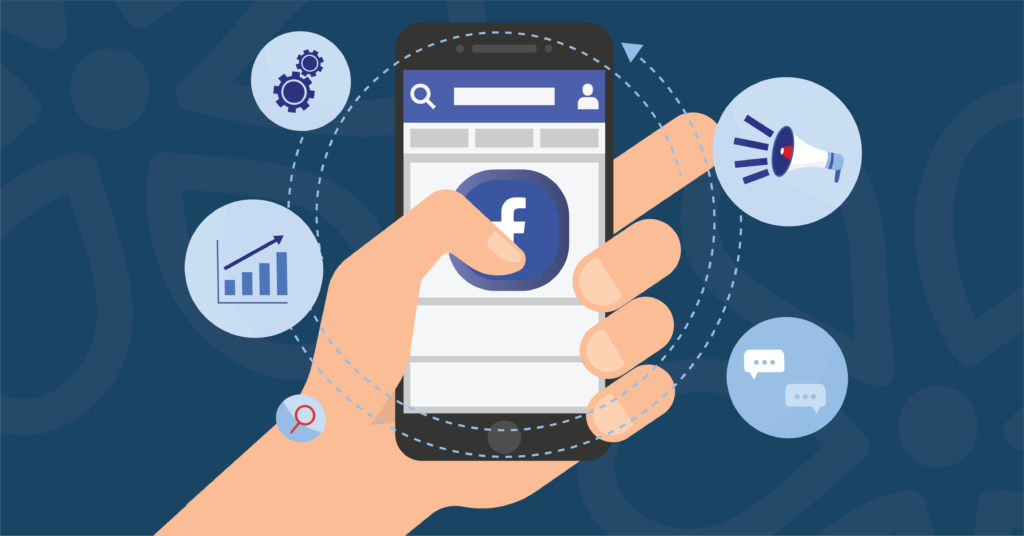Explore different types of communication in digital media, from social media to podcasts. Weave a unified brand story across multiple communication channels.
Reaching your audience effectively typically means utilizing a variety of media channels in your overall marketing strategy. Each platform offers unique engagement opportunities, from social media and podcasts to print and outdoor advertising. Omnichannel marketing is the strategy that keeps your brand’s message consistent and compelling across all channels. It plays a key role in creating a cohesive brand story that connects with consumers on every level, no matter where they find you. Read on to learn more about omnichannel marketing and the different types of media communication you can use to make your message resonate with your audience, no matter where they are.
Types of Media For Communication
Let’s first explore a variety of media channels. We’ll discuss each channel’s methods, functions, and user demographics so you can understand how they help you reach your audience.
Social Media
Social media platforms like TikTok, Snapchat, and even YouTube allow brands to interact directly with their target demographic, fostering a space for real-time communication and community building. Through social media, businesses can share content that engages their audience, increases brand visibility, and drives conversions with targeted campaigns. Social media’s popularity makes it a fundamental part of marketing strategies today. Using social media to communicate can help brands connect with younger audiences and drive conversions through innovative tools like shoppable content.
Print Media
Despite the surge in digital consumption, print media is a valuable communication channel. It offers a tangible connection to an increasingly virtual world. Traditional media, like newspapers, magazines, and flyers, continue to effectively reach specific demographics who prefer the tactile experience of written words. Print’s credibility and permanence can complement digital strategies, providing a diversified approach to reach broad audiences. In the digital age, print media stands out for its ability to capture attention and offer lasting impressions that digital ads often struggle to achieve.
Mass and Broadcast Media
Television shows, commercials, and radio remain powerful mediums for mass communication, capable of reaching a large audience with a single broadcast. Broadcast media’s ability to convey messages through a combination of audio, visual, and dynamic storytelling enhances its impact, making it a preferred choice for brands looking to establish a strong presence in the market and connect with a wide audience base. Demographics reachable through broadcast media vary depending on the platform and time of day. Daytime television and radio, for example, tend to reach an older demographic, while advertisements on streaming services are more effective for targeting younger audiences.
Digital and Electronic Media
Digital and electronic media have changed communication, introducing new media channels like websites, blogs, and streaming services that support quick, interactive conversations. These platforms provide a versatile foundation for computer-mediated communication, enabling brands to reach audiences precisely and efficiently. Digital media’s capacity for personalization and analytics allows for more targeted and measurable marketing efforts, changing how companies engage with their consumers and measure success.
Outdoor and Analog Media
Billboards, transit stations as spaces, and other forms of outdoor advertising continue to offer significant value, delivering messages to audiences on the move. Outdoor media’s physical presence and strategic placement capture attention in public spaces, making it an effective channel for high-impact visual advertising. You can even combine digital and out-of-home advertising to create an interactive experience for your audience.
Most outdoor media remains analog, and that is a good thing. Analog media’s simplicity and broad reach make it a key component of integrated marketing campaigns, especially for local targeting and brand visibility.
Interactive Media
Video games and interactive platforms represent a cutting-edge frontier in media communication. These mediums engage users in immersive experiences, offering unique opportunities for brands to integrate advertising that enhances rather than interrupts the user experience. Interactive media’s ability to captivate audiences through engaging content and participatory elements opens new avenues for creative marketing.
Types of Communication
Within each media channel, there are also various ways to communicate with your audience. Here are a few common ones to consider.
Verbal Communication
Verbal or oral communication is the foundation of conveying messages through words. In media that incorporate audio elements, such as podcasts, radio, and video interviews, the choice of words, tone, pace, and articulation significantly influences how messages are received and understood. Verbal communication is about what is said and how it is said. The vocal delivery of messages is critical in engaging audiences and ensuring the intended meaning is accurately transmitted.
Written Communication
A visual counterpart to oral communication, written communication is the most common type of communication. Whether it’s articles, videos, blog posts, or updates on social media, written communication is a primary method for sharing information and ideas. Its role in informing, persuading, and entertaining audiences makes it a fundamental aspect of business communication.
Non-Verbal Communication
In media with a video component, non-verbal communication is just as critical as verbal. Body language, including gestures, facial expressions, and posture, significantly enhances or undermines spoken messages. These non-verbal cues are pivotal in storytelling and effectively conveying messages, providing depth and emotion to the communication. They help to emphasize points, convey sincerity, and facilitate connection with the audience, making the content more relatable and impactful.
Visual Communication
Visual communication leverages images, graphics, colors, and symbols to convey messages and information. This type of communication is especially effective in capturing attention and illustrating complex ideas in an accessible way. In digital media, visual elements such as infographics, branding materials, and video content play a significant role in storytelling and audience engagement. Visuals complement other forms of communication, enhancing the overall impact of the message.
Digital Communication
The digital landscape offers a wide array of communication platforms, including social media, websites, and email. Digital communication facilitates immediate and interactive engagement with audiences worldwide. It allows for a diverse mix of verbal, written, and visual elements, making it a dynamic and versatile medium. Strategies for digital communication often involve content marketing, social media engagement, and online branding efforts, emphasizing the importance of a cohesive and responsive online presence.
Public Relations and Face-to-Face Interactions
Earning and keeping trust is important for a brand, and public relations are central to this effort. Engaging directly with people through face-to-face meetings, whether at events, conferences, or even within stores, creates a personal bond between the brand and its audience. Such direct interactions make the brand more relatable and trustworthy, fostering loyalty through a personal touch.
Targeting the Right Audience
As you craft messaging for your different communication channels, remember who you’re trying to reach. Your target audience may expect one thing from you on social media, but that same delivery may feel jarring on a billboard. It all comes down to who you’re trying to reach, where you’re trying to reach them, and what they expect to see from you there. Here are a few things to remember as you form your marketing messages.
Understanding Your Audience
Knowing who you are speaking to—a specific group of people or the general public—allows you to craft resonating messages. This understanding influences not just the content of your communication but also the choice of media channels, ensuring that your message reaches those most likely to respond.
Geographical Considerations
Geographical nuances can significantly impact the effectiveness of a media strategy. Tailoring your approach to fit the cultural and social dynamics of specific markets can enhance engagement and relevance. Each market has unique preferences and media consumption habits, necessitating a customized strategy that respects these differences while effectively communicating your brand’s message.
Demographic and Psychographic Segmentation
Beyond geographical considerations, demographic (age, gender, income, etc.) and psychographic (lifestyle, values, interests, etc.) segmentation allows for even more refined targeting. This approach enables brands to align their communication forms and media with the specific characteristics and preferences of their audience segments. By understanding and leveraging these nuances, brands can create impactful connections, driving engagement and fostering loyalty.
Omnichannel Marketing: A Unified Approach
Crafting a brand message that feels cohesive across channels but also utilizes different types of communication depending on each channel’s users can be a tricky balance. Here are a few tips to help you with this delicate communication process.
Creating a Cohesive Brand Story
Omnichannel marketing demands a strategy that ensures your brand’s story is consistent across all channels. This approach is key for building a strong, recognizable brand identity. A cohesive brand story means adjusting your message to fit the context of each channel while keeping the core message the same. At First Media, we specialize in developing these strategies, ensuring that your brand’s story is clear and compelling, no matter where your audience encounters it.
Leveraging Different Forms of Media
The key to effective omnichannel marketing is understanding how to use each media type’s strengths to your advantage. Whether it’s mass media’s broad reach, digital platforms’ targeted appeal, or direct marketing’s personal touch, each channel offers unique benefits. We can also help you identify the best channels for your message and audience, ensuring your marketing efforts are cohesive and impactful.
Visit our Omnichannel Distribution page to discover how we can help you create a cohesive and compelling brand story that resonates across platforms today.





